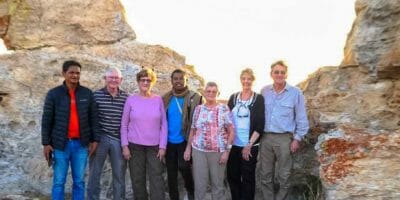
The Ironclad operation from May 5 to 7, 1942 which took place in the mail bay of Diego-Suarez demonstrates that Madagascar was a mini-scène of the second world conflict. However, this episode is rarely mentioned in school books.
June 22, 1940, exsangue France signed the Armistice Convention and is occupied by the Germans. From then on, the French marshal Philippe Pétain is at the head of the Vichy regime. Indeed, this has repercussions on certain colonies, especially on the big island. Having relations with the British army, Marcel de Coppet, governor general of the time was dismissed from his functions. In December 1940, General Armand Léon Annet took control. Unlike his predecessor, he established a hostile policy towards the English.
The strategic position of Madagascar, and more particularly that of Diego-Suarez, is an asset as much for vichysts as the allies. French military base since 1885, the bay of the big northern city plays a capital importance, especially in times of war because mastering the southwest area of the Indian Ocean is an advantage. In addition to the control of vichysts, there is also the Japanese threat. The Japanese army, after having occupied Ceylon (current Sri Lanka) continues its journey with the intention of invading the Big Island. Looking for the axis (Japan-Germany) to quit the perimeter, the British army made up of English, South Africans, Kenyans leading an expedition. “Around 5 a.m., sailors at Diego Suarez are brutally awakened by explosions of bombs and torpedoes. Swordfish torpedo players and Fairey Albacore are launching an attack on buildings in the harbor. Simultaneously, the SEA Hurricane IB of the 880th Squadron took off from the Indomitable aircraft carrier bridge. With Lieutenant RJ Cork as leader, they lead a raid against the Arrachart aviation camp, south of Antsiranana ”writes the French aviator captain Jean Assoling in his memory. The pilot disappeared on a mission off Madagascar… After more than 2 years and 5 months of occupation, the pro-Pétain leaders of Madagascar capitulate. On November 8, 1942, an armistice was signed in Ambalavao, the city which became the capital during the reign of vichysts in Madagascar.
The difficulties of the time of Armand Annet
To say that life was harder than that of the previous time would be exaggerated. The Malagasy, the “natives”, in particular, have never known life in pink during colonization. The circumstance depends on the political and economic situation of the metropolis. When the Big Island falls into the hands of “work, family, homeland” followers (the motto of Philippe Pétain), the Aboriginal people live in autarky. Frustrated by pressure from France, the administration sows terror. In addition, two opinions spread. The convinced of the allies and the admirers of Pétain. Therefore, tension is felt in the country. The archives even reveal the circulation of leaflets. Two obscure years for some, phase of transitional for some, the 30 months of Armand Léon Annet justify the difficulty of “the motherland” during the first part of the Second World War.
Legacy. British occupation in the big city in the north has marked local history. “” Laklen’anglais ”, The key to the English, for example, is reminiscent of the following anecdote: ” During the battle, the Bazary Be market was closed. Once the war is over. The English have opened the market so that the population can make its provisions. Seeing this, some were stunned and wondered how these men had recovered the key to the Bazaary Be while the French held it. ” Indeed, the landing of the British army made up of Zoulous and Kenyans served as a historical landmark for the ancients. They call it Diego of the Time of Goudoumony. The greeting of English -speaking African soldiers is ” Good Morning ». But, with their accent, the inhabitants hear Goudoumony. As a result, the time of Goudoumony, it is quite simply the Ironclad operation!
ISS HERIDINY
The article History: The British army in Diego-Suarez in 1942 appeared first in Midi Madagasikara.











